Here's a working sample for producing linear curves for some user-defined metrics. .
.
How can I have it fitted to a non-linear curve?
def plot(version, str_metric):
metric1 = [0.459, 0.5844, 0.6246, 0.6459, 0.6429, 0.6629, 0.664, 0.6722, 0.6832, 0.6931, 0.7103, 0.7144, 0.7213, 0.716, 0.7182, 0.7419, 0.7418, 0.7594, 0.7639, 0.7854, 0.7752, 0.7912, 0.8164, 0.8311,
0.8283, 0.8103, 0.869, 0.8708, 0.884, 0.9017, 0.9248, 0.9233, 0.9432, 0.9306, 0.945, 0.959, 0.9675, 0.9649, 0.982, 0.9276, 0.975, 0.9772, 0.9786, 0.988, 0.9825, 0.9901, 0.9934, 0.993, 0.9956, 0.9951]
metric2 = [0.4541, 0.5807, 0.6138, 0.6339, 0.6322, 0.63, 0.6451, 0.6514, 0.6589, 0.6597, 0.6759, 0.6817, 0.6866, 0.6803, 0.6819, 0.7009, 0.7039, 0.7162, 0.7197, 0.7237, 0.7145, 0.7239, 0.7416, 0.7426,
0.7461, 0.7054, 0.7495, 0.7331, 0.7316, 0.7023, 0.7232, 0.7359, 0.7257, 0.7178, 0.6918, 0.7118, 0.7183, 0.6939, 0.6855, 0.6874, 0.6745, 0.6952, 0.6491, 0.6659, 0.6624, 0.6737, 0.6587, 0.653, 0.6485, 0.6854]
epochs = [i for i in range(len(metric1))]
color_dict = {'SGD_Train': 'darkblue',
'SGD_Test': 'red'}
df = pd.DataFrame({'Epochs': np.hstack([epochs, epochs]),
str_metric: np.hstack([metric1, metric2]),
'Type': np.repeat(['SGD_Train', 'SGD_Test'], len(epochs))})
pdb.set_trace()
p = ggplot(df, aes(x='Epochs', y=str_metric, color='Type')) +\
geom_smooth(show_legend=True, method='lm',
span=0.10, se=True, level=0.80) +\
ggtitle(version) +\
scale_color_manual(values=color_dict) +\
theme(text=element_text(size=25), legend_box_margin=1, legend_title=element_text(size=23), legend_position=(0.77, 0.5), legend_text=element_text(size=20), legend_box_background=element_rect(fill='transparent')) +\
theme(plot_title=element_text(margin={'t': -15, 'b': -20}))
P.S. Non-linear curves are easy when data values are more, I could just change lm to loess and make it work. But here data entries are less. Also, I couldn't make stat_smooth methods work.
I was trying something like below:
stat_smooth(method='wls', method_args={'start': list(a=1, b=1), formula='y~a*x^b'}, se=True)
Any help will be appreciated.
